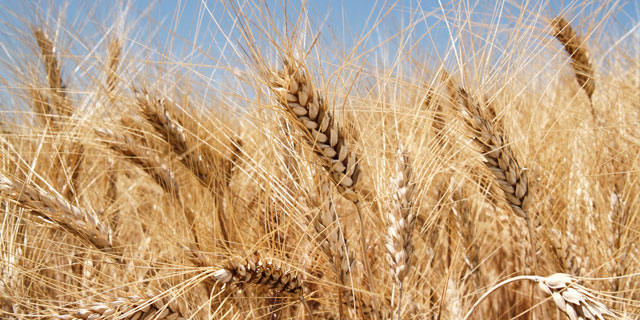Just about every healthy snack or packaged food boasts about its whole grain content, which can be a bit confusing. What does it all really mean, what are the best whole grains for you, and how do they impact your health?
Whole grains, which have not been ground into a powdery flour, take longer to cook, but the payoff is steady blood sugar levels, lower cholesterol, and an efficient digestive tract. Let's take a look at the whole grains that should be on your grocery list this week.
Barley
If you aren't the hot cereal type, amp up your gluten-free fiber intake by adding a few tablespoons of barley to your next steaming pot of caldo. Chewy, with a nutlike flavor, adding barley to a savory stew can even help stretch your budget, yielding more portions in your recipe. You can also use barley as a fiber rich replacement for white rice. Healthy, economical, and yummy, what’s not to love?
Wild Rice
Although not a true rice, wild rice is a true whole grain, as it's the seed head of a Native American grass that grows in marshy areas of Minnesota. Wild rice is a great gluten-free side dish with any roasted meat, and adds a nutty, chewy texture to chopped salads, or stuffings.
Farro
Popular in Italy, farro is whole grain wheat, and is finally making an appearance in U.S. restaurants. Three different types grain (einkorn, emmer, and spelt) can be labeled and sold as farro, so keep an eye out for all three and have faith that the farro you find in your local grocery store will be well worth a try. Try serving whole grain farro next to broiled fish or sliced steak or wok-toss boiled farro with broccoli rate and peppers for a great veggie meal. Or drizzle leftover cooked farro with a bit of olive oil and chopped scallions for a great, late night snack.
Next, a look at more delicious whole grains… [pagebreak]
Steel Cut Oats
Rolled oats, which are more common here in the U.S., have been steamed and pressed under weighted industrial rollers to make them tender. Steel cut oats (also known as Irish oats) have not been steamed and are processed as little as possible. High in fiber, gluten free, and proven to have cholesterol fighting power, steel cut oats are an inexpensive, filling cereal for any meal. Their lengthy cooking time deters some who don't have that much morning ambition, but you can always follow the package microwave directions or (my favorite) boil them for 10 minutes on the stove while you are cooking dinner, allow them to cool, then pack them along with their cooking water in a travel container. Steel cut oats will continue to swell and soften in the refrigerator overnight and require only a quick zap in the microwave when you get to the office. Try adding a handful of dried fruit for a bonafide fiber-palooza.
Quinoa
A staple food in Peru, quinoa has been considered the "mother of all grains" for around 8 thousand years. Related to epazote and the Mexican green huauzontle, quinoa is rich in high in protein and gluten free. Nowadays, quinoa is finding itself on fancy menus across the world, accommodating the desire to add more whole grains to our over processed modern diets. Any guisado feels right at home when nestled in a warm bed of quinoa and will certainly get some jealous glances from your co-workers in the lunch room.
Amaranth
A distant cousin of quinoa, amaranth is a grain that was treasured by the Aztecs. Once it's boiled, amaranth has an exceedingly high protein content and is gluten free. Cooked amaranth can be eaten as a morning porridge, but works best when added to other grains, such as granola blends or grain based recipes, such as breads or cookies. The most well known use of amaranth is the Mexican sweet alegria, which is similar to the crispy rice marshmallow bars we see at bake sales here in the U.S.


![Making Mealtime Matter with La Familia: Easy Sofrito [Video]](https://thelatinkitchen.com/wp-content/uploads/2015/10/sofrito-shutterstock__0-500x383.jpg)
![Easy Latin Smoothies: Goji Berry Smoothie [Video]](https://thelatinkitchen.com/wp-content/uploads/2015/12/goji_berry-shutterstock_-500x383.jpg)
















![Fun and Fast Recipes: Fiesta Cabbage Salad [Video]](https://thelatinkitchen.com/wp-content/uploads/2015/11/fiesta_cabbage_slaw-shutterstock_-500x383.jpg)









